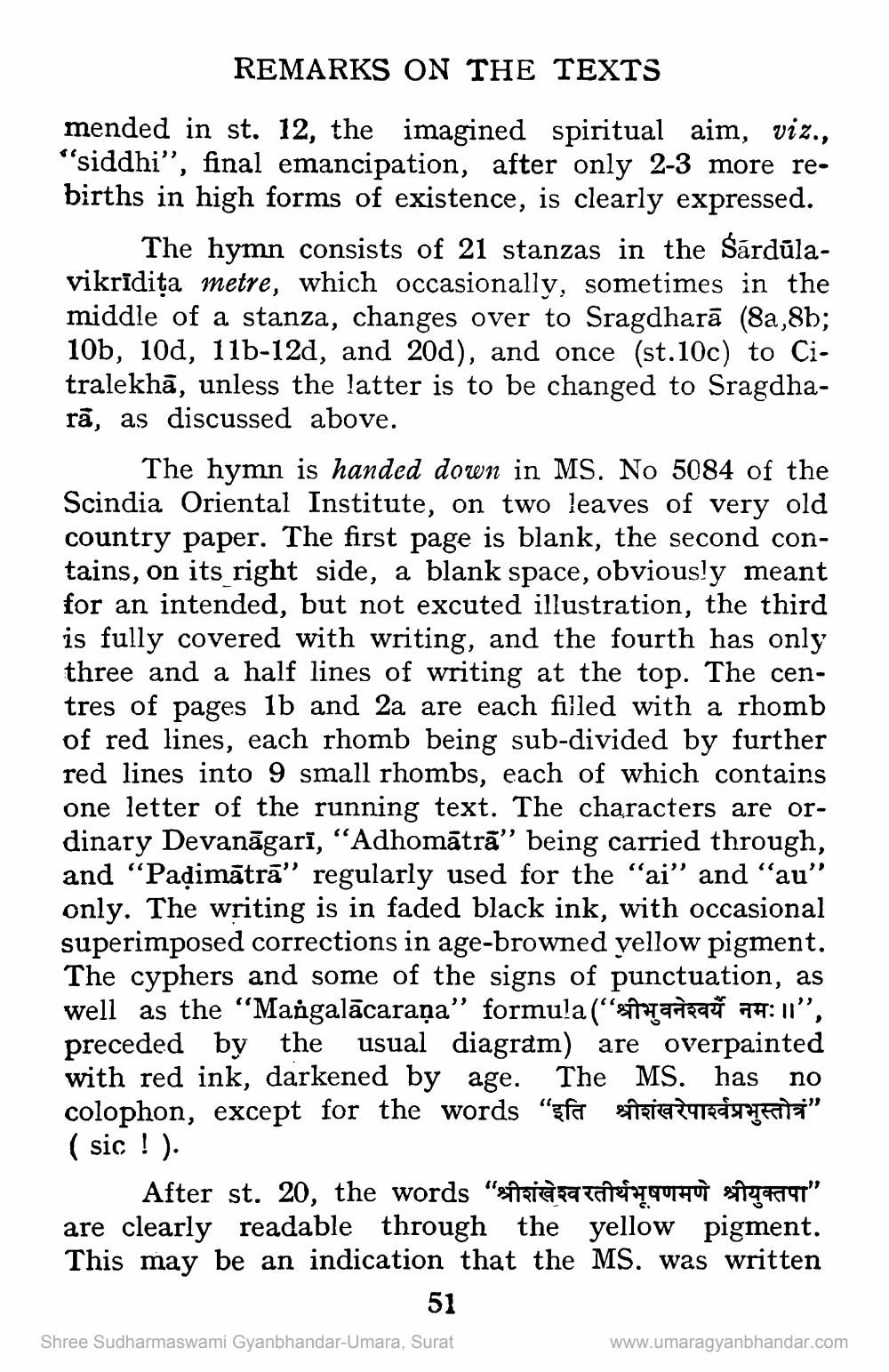________________
REMARKS ON THE TEXTS mended in st. 12, the imagined spiritual aim, viz., "siddhi”, final emancipation, after only 2-3 more rebirths in high forms of existence, is clearly expressed.
The hymn consists of 21 stanzas in the Sárdūlavikridita metre, which occasionally, sometimes in the middle of a stanza, changes over to Sragdharā (8a,8b; 10b, 100, 11b-12d, and 20d), and once (st.10c) to Ci. tralekhā, unless the latter is to be changed to Sragdharā, as discussed above.
The hymn is handed down in MS. No 5084 of the Scindia Oriental Institute, on two leaves of very old country paper. The first page is blank, the second contains, on its right side, a blank space, obviously meant for an intended, but not excuted illustration, the third is fully covered with writing, and the fourth has only three and a half lines of writing at the top. The centres of pages 1b and 2a are each filled with a rhomb of red lines, each rhomb being sub-divided by further red lines into 9 small rhombs, each of which contains one letter of the running text. The characters are ordinary Devanāgarī, "Adhomātrā” being carried through, and “Padimātrā'' regularly used for the "ai” and “au" only. The writing is in faded black ink, with occasional superimposed corrections in age-browned yellow pigment. The cyphers and some of the signs of punctuation, as well as the "Margalācaraña" formula ("ittade att 74: 11", preceded by the usual diagram) are overpainted with red ink, darkened by age. The MS. has no colophon, except for the words "fa staradareenTE" ( sic ! ).
After st. 20, the words "sisia za taq uì si 197" are clearly readable through the yellow pigment. This may be an indication that the MS. was written
51
Shree Sudharmaswami Gyanbhandar-Umara, Surat
www.umaragyanbhandar.com




